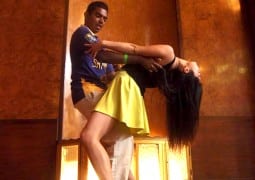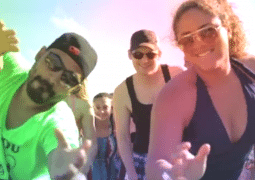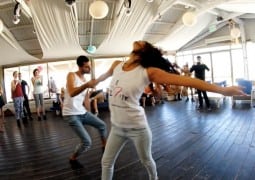Video: Jessica Carro’s Interview With Renata Peçanha about Zouk History
Zoukology’s Jessica Carro had the privilege of interviewing well-known instructor and dancer Renata Peçanha at Berg’s Congress 2015. In part I of this interview, Renata describes the Lambada origins of Zouk. Watch as she unravels the story of how it all began in this brief Zouk history lesson.
(Part 1) – The History of Zouk
Zouk is the Son of Lambada – Renata Peçanha
Renata Peçanha: Hello everyone. Well, first of all I’d like to thank you for the invitation to do this interview with me.
Jessica Carro: It was my pleasure!
Renata: It is always a pleasure to be highlighting things about Zouk, the history of Lambada and Zouk. So the public knows our history, about this Brazilian dance.
Actually, I started to dance Lambada around 1991-1992 when Lambada was still trending. Through this I met Jaime Arôxa, who was teaching out of Rio de Janeiro. That is when I began to train at Jaime Arôxa’s school, where I started working with Adílio Porto who ended up being my partner for 12 years; I married him and we have a daughter.
Together with Adílio at Jaime Arôxa’s school, I started giving classes. This include other rhythms like Bolero, Samba and Gafieira. I also started creating a different way of dancing Zouk. At this time, in 1994-1995, the songs were changing, the songs that we were using to dance were not so fast – there were no longer Lambada. More Zouk songs but still not so slow as today, a little bit faster.
Since the new Zouk music had the possibility of using the musicality and the pauses to dance, breaking the dynamic, we decided to change the way of dancing a little bit. First thing that we decided to do was the basic step. We realized it was really difficult for people learn Lambada, because of the use of hips, the hips movements… And basics were difficult for them. So in Samba of Gafieira, in Bolero; we have basics that are going forward then back, similar to Salsa.
And we noticed that these basics were going to be easier for the students to learn. For example: old people could dance as well because the songs were slower and the basics were easier. So we started developing this way of dancing forward then back, the opening for lateral corridor that was not used in Lambada before, because every time in Lambada we open the girl to turn already. So in Zouk we started to do this; lateral, others steps like the bonus. I developed this together with Adilio.
Jessica: And you guys just developed them working together? Did you use any references; did you look at anything in particular?
Renata: No, the references I had was my background in academic dances. Every time I dance Zouk I felt like I was projecting more my movements, stretching more, doing it longer. And this comes from my background in Classic, in Jazz, in these kinds of dances. Because this was very similar to what I used to dance.
Jessica: So then that’s how you got into this teaching new style?
Renata: Yes, little by little we started developing this, experimenting.
Jessica: And what did people, the Zouk dancers, think about this new style?
Renata: This is something difficult, because when you change something many people go against you. For example, when we do routines, in the past, in 1996 for example, we did the choreography called “Spiritual” that I used the floor, actually, I started on the floor- laying down- and I used a lot of ballet movements, pirouettes and this kind of things together with Zouk. When the people from Lambada watched that they say “this is not Lambada, this is not Zouk!” and they criticized me a lot. But today for a show, everybody does this. This, actually, was inspired by my master Jaime Arôxa because he used to do this in other rhythms; in Samba, in Salsa, he used to do a lot of this; and everybody criticized it.
Jessica: Right. And now, and today?
Renata: Everybody does this. So you cannot say that doing something different is bad. It is strange at first when you see it, but that does not mean it is bad.
Renata: I think the most important thing is to keep the essence of the dance, because sometimes people want to change but they lose the meaning of this dance. And this I think we kept. We put some new movements but not losing the identity of the dance.
Jessica: Right. That’s important, that’s really important.
Renata: Yes. Zouk is a son of Lambada. It’s not another kind of dance that we created, it developed from Lambada. So it is very different from creating another style of dance.
Tags Brazilian ZoukBrazilian Zouk HistoryRenataRenata Pecanha
- Previous Teacher Spotlight: SvetLana’s Interview With Getúlio Ramalho – the Man Who Smiles With His Eyes
- Next Video: Jessica Carro’s Interview With Bruno Galhardo at the 2015 Washington DC Zouk & Kizomba Festival
You may also like...
Sorry - Comments are closed







